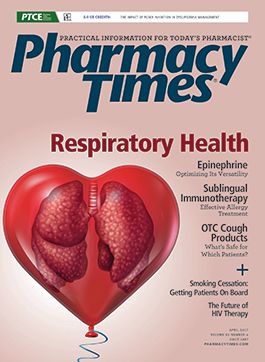Publication
Article
Pharmacy Times
"Use as Directed" Is a Source of Confusion
Pharmacists should not assume that prescribers have educated patients on how to use medications as directed.
PROBLEM
The phrase “Use as directed” is ambiguous and does not constitute adequate dosing instructions for patients or practitioners (such as during medication reconciliation). Pharmacists should not assume that prescribers have educated patients on how to properly take medications or that patients will remember instructions. Explicit directions, including the strength, frequency of administration, route of administration, and duration of therapy, are needed for pharmacists to effectively educate patients. Furthermore, certain elements of a prescription (eg, route, frequency, form) may help pharmacists differentiate between 2 drug names that look or sound similar.
“Use as directed” invites misunderstandings about dosing instructions. Several events reported to the Institute for Safe Medication Practices (ISMP) National Medication Errors Reporting Program illustrate errors that have occurred, at least in part, due to prescriptions that include “Use as directed” instructions.
Example 1: After his son accidentally administered 100 units of NOVOLOG (insulin aspart), an elderly man experienced a severe hypoglycemic event requiring hospital admission. The insulin vial was labeled with the following directions: “Insulin aspart 100 units/mL. Give 3 times a day before meals, as directed.” The man’s son did not receive any teaching when his father was discharged from the skilled nursing facility the day prior to the event.
Example 2: An electronic prescription for EPIPEN (EPINEPHrine) was accidentally transmitted to a pharmacy instead of the intended insulin pen needles. The EpiPen was dispensed to the patient’s wife with the instructions to “Use as directed.” The pharmacist assumed that an EpiPen had been previously dispensed to the patient and did not provide counseling regarding its proper use. After having trouble while trying to connect the EpiPen to the insulin pen, the patient’s wife called the pharmacy and the error was discovered.
To learn more about the frequency and use of “As directed” instructions on prescriptions, ISMP conducted an online survey of outpatient pharmacists between May 19 and June 19, 2016. It included 6 questions: 2 related to respondent demographics and 4 concerning the prevalence of the sig “Use as directed” on prescriptions, medications commonly prescribed with these instructions, how these pre- scriptions are sent to the pharmacy, and how phar- macists address these prescriptions.
The results of the survey indicated that many drugs are still prescribed and dispensed with “Use as directed.” A total of 434 participants responded to the survey. More than half (55.7%) indicated that 1% to 5% of the prescriptions they receive include “Use as directed,” and less than 10% indicated they never receive prescriptions with these confusing instructions. Respondents indicated that they most frequently (74.7%) verify the directions with the prescriber when they receive prescriptions written as “Use as directed,” provide the usual and customary directions for the medication if they exist (59.3%), or simply place “Use as directed” on the bottle (43%). Many noted that they confirm the days’ supply or maximum daily dose with the prescriber for billing purposes.
SAFE PRACTICE RECOMMENDATIONS
To better safeguard the correct and appropriate use of medications and help minimize errors between medications that look or sound alike, ISMP and the National Coordinating Council for Medication Error Reporting and Prevention (nccmerp.org/recommendations-enhance-accuracy-prescription-writing) recommend health care providers include explicit directions on prescriptions. Pharmacists also should avoid dispensing medications labeled “Use as direct- ed.” If the directions exceed space limitations, a supplemental or overflow label may be required. Also verify all directions with prescribers prior to dispensing the medication and educate patients to ensure they know how to take their medications properly.







